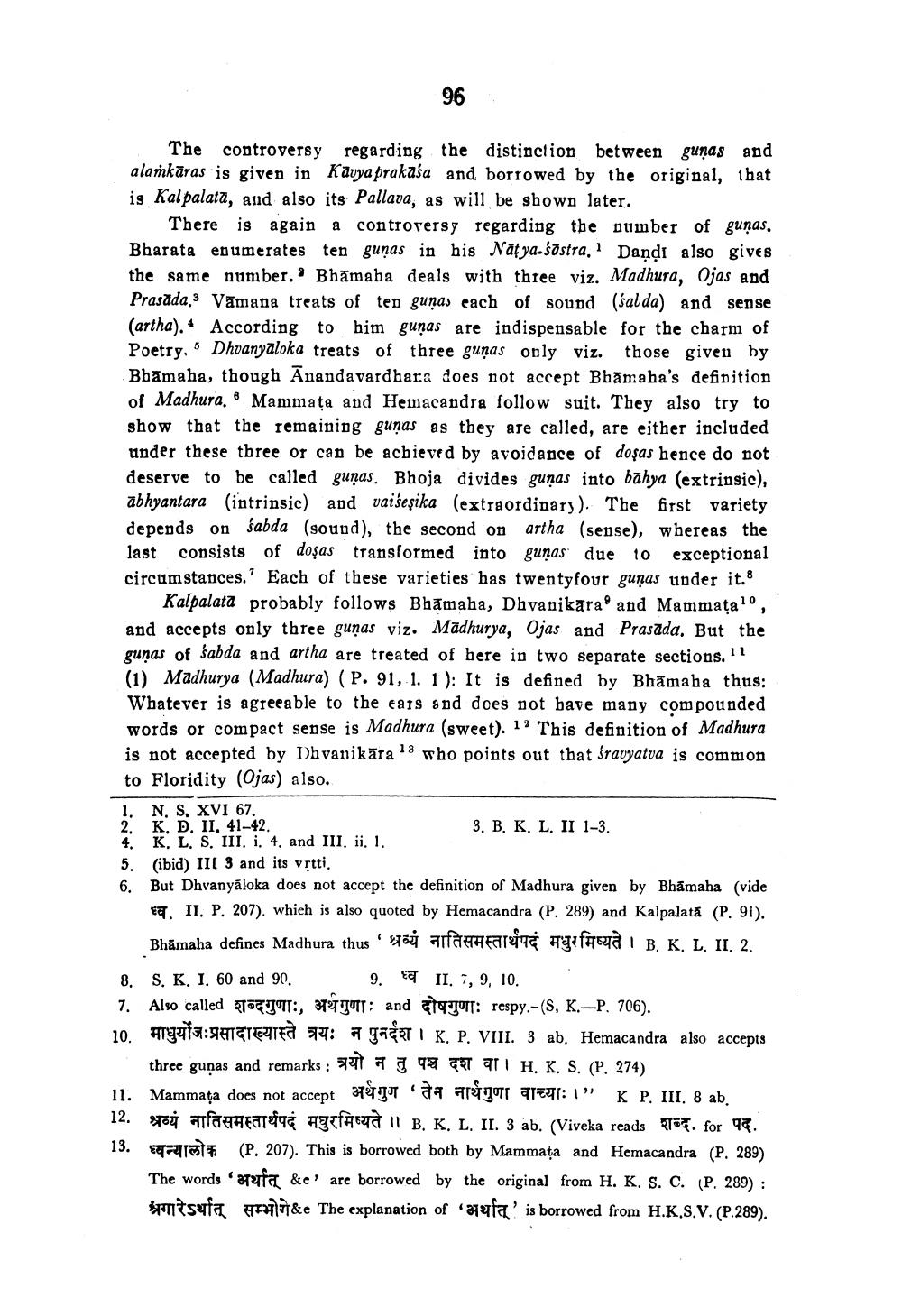________________ 96 The controversy regarding the distinction between gunas and alamkaras is given in Kavya prakasa and borrowed by the original, that is Kal palata, and also its Pallava, as will be shown later. There is again a controversy regarding the number of gunas, Bharata enumerates ten gunas in his Natya-sostra.' Dandi also gives the same number.' Bhamaba deals with three viz, Madhura, Ojas and Prasada.3 Vamana treats of ten gunas each of sound (sabda) and sense (artha). According to him gunas are indispensable for the charm of Poetry, Dhvanyaloka treats of three gunas only viz. those given by Bhamaha, though Anandavardhara does not accept Bhamaba's definition of Madhura. Mammata and Hemacandra follow suit. They also try to show that the remaining gunas as they are called, are either included under these three or can be achieved by avoidance of dosas hence do not deserve to be called gunas. Bhoja divides gunas into bahya (extrinsic), abhyantara (intrinsic) and vaisesika (extraordinary). The first variety depends on sabda (sound), the second on artha (sense), whereas the last consists of dosas transformed into gunas due 10 exceptional circumstances. Each of these varieties has twentyfour gunas under it.8 Kalpalata probably follows Bhamaha, Dhvanikara and Mammata?, and accepts only three gunas viz. Mudhurya, Ojas and Prasada. But the gunas of sabda and artha are treated of here in two separate sections. 11 (1) Madhurya (Madhura) (P. 91,-1. 1): It is defined by Bhamaha thus: Whatever is agreeable to the ears and does not bave many compounded words or compact sense is Madhura (sweet). 1deg This definition of Madhura is not accepted by Dhvanikara 13 who points out that sravyatva is common to Floridity (Ojas) also. 1. N. S. XVI 67. 2. K. D. II, 41-42. 3. B. K. L. II 1-3. 4. K L. S. III, i. 4, and III. ii. 1. 5. (ibid) IIC 3 and its vrtti. 6. But Dhvanyaloka does not accept the definition of Madhura given by Bhamaha (vide $. II. P. 207). which is also quoted by Hemacandra (P. 289) and Kalpalata (P. 91). Bhamaha defines Madhura thus' spoj arfahrenreina gefaced B. K. L. II. 2. 8. S. K. I. 60 and 90. 9. II. 7, 9, 10. 7. Also called TEIT:, TITT: and layu: respy.- (S, K.-P. 706). 10. HTETTE:JATETEZIE 92: gaet i K. P. VIII. 3 ab. Hemacandra also accepts three gunas and remarks: 771 I 92 T af H. K. S. (P. 274) 1. Mammata does not accept pa gut a apregor Jel: 1" K P. III. 8 ab. son alfaharareiga Athena 11 B. K. L. II. 3 ab. (Viveka reads 77. for 98. 91 (P. 207). This is borrowed both by Mammata and Hemacandra (P. 289) The words y fa &e' are borrowed by the original from H. K. S. c. (P. 289) : Botsufa &e The explanation of pafa' is borrowed from H.K.S.V. (P.289).




